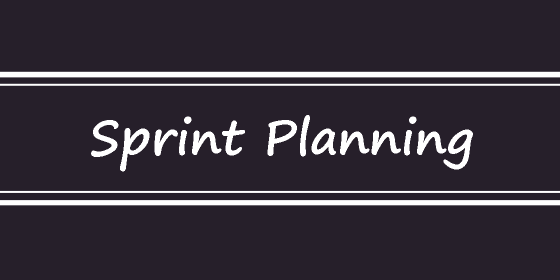Sprint Planning

Sprint Planning is a key event in the Scrum framework, where the Scrum Team collaboratively plans the work that will be undertaken during a Sprint. It is a time-boxed activity that occurs at the beginning of each Sprint and involves the Product Owner, Development Team, and Scrum Master.
Key points about Sprint Planning include:
- Time-Boxed Event: Sprint Planning is time-boxed to a specific duration, typically lasting up to 4 hours for a 2-week Sprint, with proportionate time for longer Sprints.
- Attendees: The Sprint Planning meeting is attended by the entire Scrum Team, which includes the Product Owner, Development Team members, and the Scrum Master.
- Objective: The primary goal of Sprint Planning is to determine what can be accomplished in the upcoming Sprint and create a detailed plan for achieving the Sprint Goal.
- Sprint Goal: The Product Owner defines the Sprint Goal, which is a concise statement that describes the objective of the Sprint and the value it is expected to deliver.
- Product Backlog Review: The Product Owner reviews the Product Backlog and discusses the highest-priority items with the team.
- Capacity and Forecasting: The Development Team determines its capacity for the Sprint, considering factors like team member availability, holidays, and other commitments. Based on this capacity and the team’s velocity (previous Sprint’s performance), they forecast how much work they can complete during the Sprint.
- Backlog Refinement: If any backlog items are not “Ready” (i.e., not sufficiently detailed for implementation), the team discusses and refines them in the meeting.
- Task Breakdown: The Development Team breaks down the selected Product Backlog items into smaller tasks and estimates the effort required for each task.
- Task Selection: The team selects the specific tasks they will work on during the Sprint, based on priority and their capacity.
- Definition of Done (DoD): The team reconfirms the Definition of Done, ensuring that there is a shared understanding of the quality criteria for each backlog item.
- Sprint Backlog: By the end of the Sprint Planning, the selected Product Backlog items and their corresponding tasks become the Sprint Backlog—a set of work items committed to for the upcoming Sprint.
Sprint Planning sets the stage for a productive and focused Sprint by aligning the team around a shared Sprint Goal and a clear set of work items. The meeting helps promote transparency, collaboration, and commitment within the Scrum Team. At the conclusion of Sprint Planning, the team should have a solid plan for achieving the Sprint Goal and delivering a potentially shippable increment by the end of the Sprint.